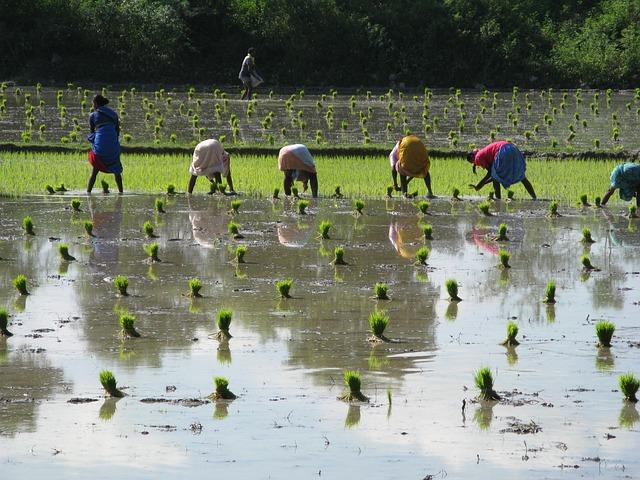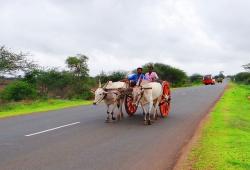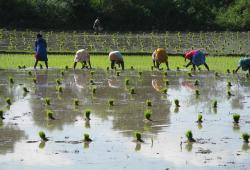
By R Gopalakrishnan
There have been 87 Union Budgets (including the interim ones) since independence. The Finance Minister will present the 88th this Thursday. Almost every budget speech has recorded the FM of the time speaking on the importance of agriculture and announcing a few measures. We know that elections are won and lost on onions and pulses. In Andhra Pradesh, several years ago, the Telugu Desam Party lost the elections after a spirited and much-admired effort by Chandrababu Naidu to modernise Hyderabad. Recently, the Gujarat elections have narrowed the majority of the BJP. In both cases, commentators argue that the rural voter has felt neglected.
Rural and agriculture are not quite coincident circles, but they are, for sure, closely linked. Our agri growth has been suffering for a long time and the trend continues; Q2 GDP data for 2017-18 showed that agriculture growth slowed to 1.7 per cent as against 4.1 per cent in Q2 of 2016-17. The need of the hour therefore is to evolve a well-articulated framework to advance agriculture and farming. The centre can add value by coalescing multiple agrarian initiatives and schemes into a holistic framework, which the States can debate, consider and adopt.
After Nehru died, the new PM, Lal Bahadur Shastri, offered the Agriculture Ministership to Sanjeeva Reddy, who declined because earlier incumbents like Jairamdas Daulatram, KM Munshi and Rafi Ahmed Kidwai achieved little acclaim; also, agriculture had a poor image compared to industry.
Agriculture is a State subject, so the onus for reform and implementing new ideas really lies with the States. In this situation, what exactly does the Union agriculture minister do? What can he do? The thinking and effort that led to the Green Revolution and continued to sustain it tells us about the possibilities and potential.
Agriculture and its history
After Nehru died, the new PM, Lal Bahadur Shastri, offered the Agriculture Ministership to Sanjeeva Reddy, who declined because earlier incumbents like Jairamdas Daulatram, KM Munshi and Rafi Ahmed Kidwai achieved little acclaim; also, agriculture had a poor image compared to industry. Shastri called on C. Subramaniam at his home to request his participation in the new cabinet and, at 10 pm that night, the PM told CS that he had been allotted the agriculture portfolio. Having served as Steel and Heavy Industries Minister, CS wondered whether he had been demoted. The story of how the 3 Ss made aggressive policy interventions has been well told—C Subramaniam, MS Swaminathan and S. Sivaraman (Hand of Destiny, C Subramaniam, Bharatiya Vidya Bhavan).
The Green Revolution phase ran its course until in 2000, a new National Agricultural Policy (NAP) was announced by the Vajpayee government. NAP was targeted “to achieve an agricultural growth of four percent per annum (which has not been achieved), to strengthen the rural infrastructure, to offer a decent standard of living to farmers and to speed up value-added agricultural growth.” Thereafter, the UPA set up the National Commission on Farmers in 2004 and its report was submitted in 2006.
The fact is that even though farming is a pressing issue in the country, the country does not currently have a holistic, visible and well-articulated framework to advance agriculture, farming, animal husbandry and allied subjects.
Need for a framework
Indian agriculture is sorely in need of transformation and frameworks are important in transformation management. Frameworks for transformation are crucial because they assemble together the complex pieces of the jigsaw. I feel that a National Agricultural Policy Framework can energise and unify fissiparous efforts.
What C. Subramaniam wrote about the situation in 1965 can be repeated with significant validity after half a century, “I was able to look at agriculture from a completely different perspective. For example, in an industry, no industrial unit can progress or succeed unless it is a profitable concern. I looked at agriculture from a similar point of view and, after some study, discussion and analysis, came to the conclusion that Indian agriculture was a losing concern for the Indian farmer.”
The fact is that even though farming is a pressing issue in the country, the country does not currently have a holistic, visible and well-articulated framework to advance agriculture, farming, animal husbandry and allied subjects.
Learning from industrial policy
Developing a consensus with the States and executing a national agenda is an urgent task of the Central government. Though GST is an important subject, I intuitively feel that if half the effort to build consensus for GST had gone into agriculture, the GDP benefits would have a higher impact!
A holistic national framework to address agricultural problems could derive structural lessons from the way India industrialised. There were four pillars on which the industrialisation strategy was based. These played out over 70 years, admittedly with flaws and strengths, but today India is counted among the top industrial powers in the world.
Putting together a similar set of the pillars for agriculture is essential to aggregate the wisdom that already exists and to address the development issues that the nation faces. I have often argued that the holistic plan should encompass Technology, Risk, Institutions, Policy and Skills:
I. Technology incubation - outcome based technology policy encouraging research, innovation and incubation.
II. Risk Institutions and financing - Banks and financial institutions to help promote technology infusion, insurance and mechanisation.
III. Institutions of governance - Promote farmer producer organisations to be agri SMEs/MSMEs.
IV. Policy for farming - Focus on improving human and farm productivity.
V. Skilling- Agricultural Technical Training Institutes
The Green Revolution phase ran its course until in 2000, a new National Agricultural Policy (NAP) was announced by the Vajpayee government. NAP was targeted “to achieve an agricultural growth of four percent per annum (which has not been achieved), to strengthen the rural infrastructure, to offer a decent standard of living to farmers and to speed up value-added agricultural growth.” Thereafter, the UPA set up the National Commission on Farmers in 2004 and its report was submitted in 2006.
We already have the Pradhan Mantri Kisan Bima Yojana, which is a significant development in recent times. But this must be followed up with steps in the national budget that can bring a new focus on agriculture as a key part of our growth story. (879 words)






